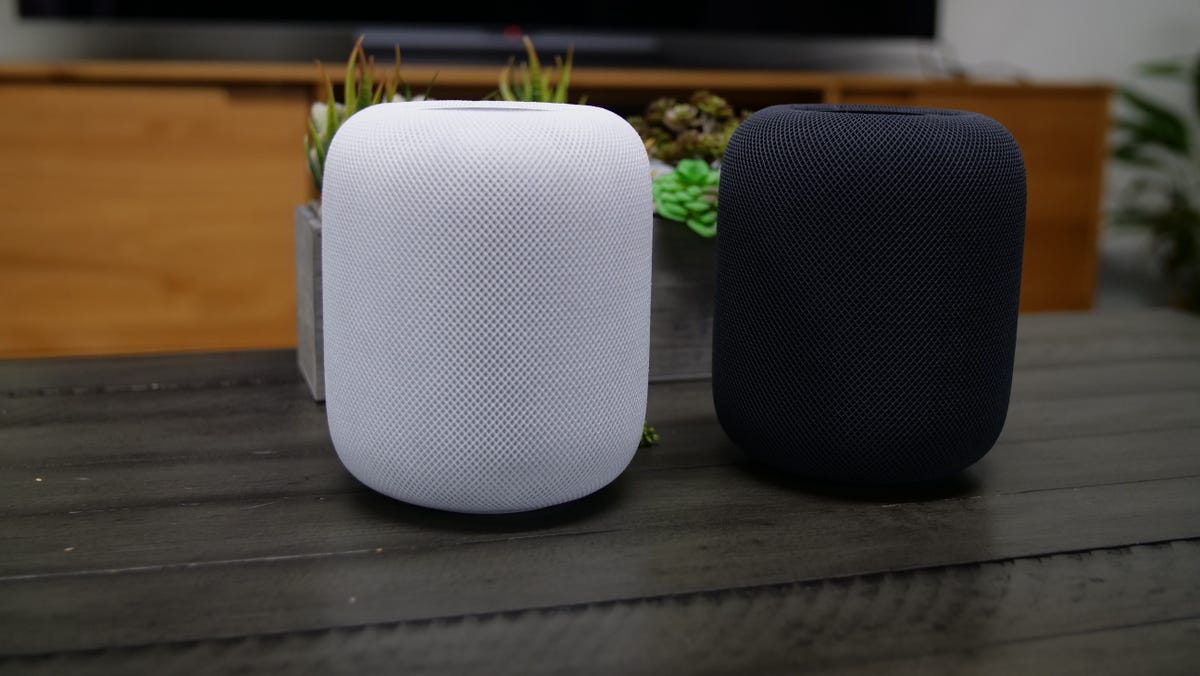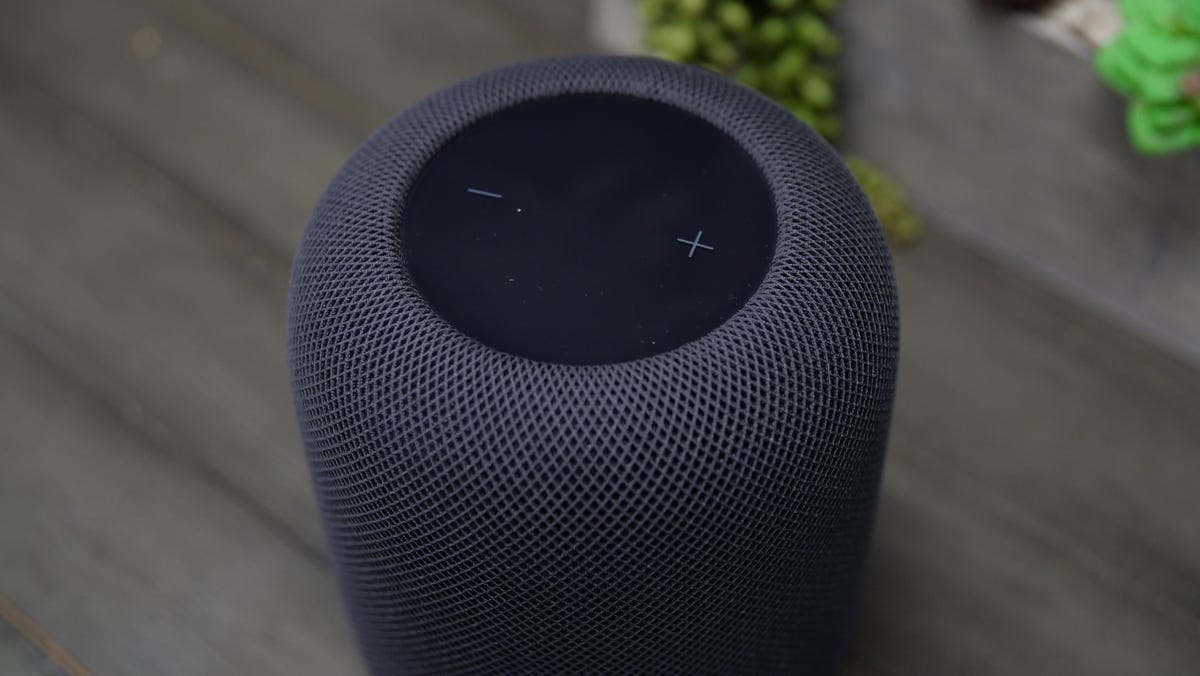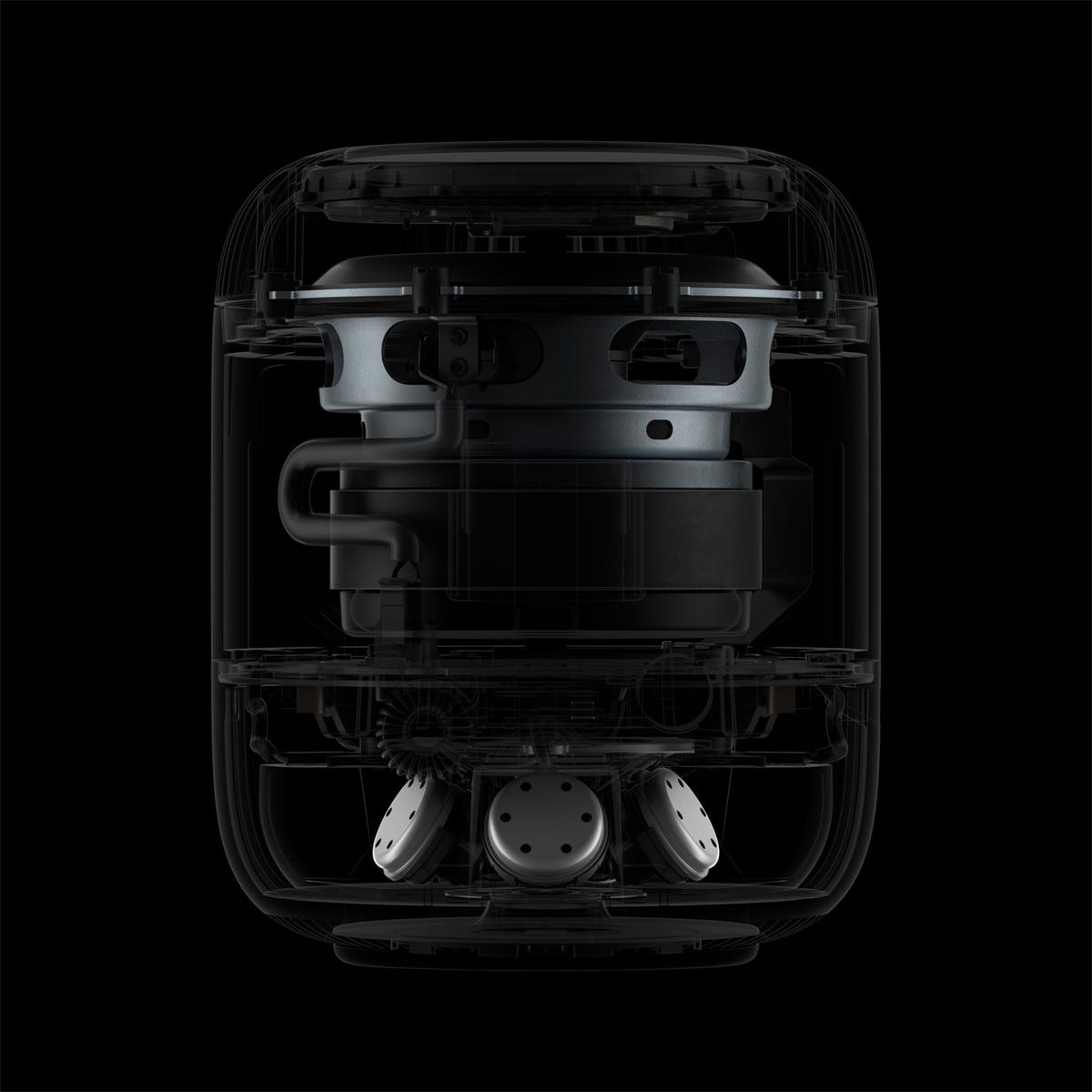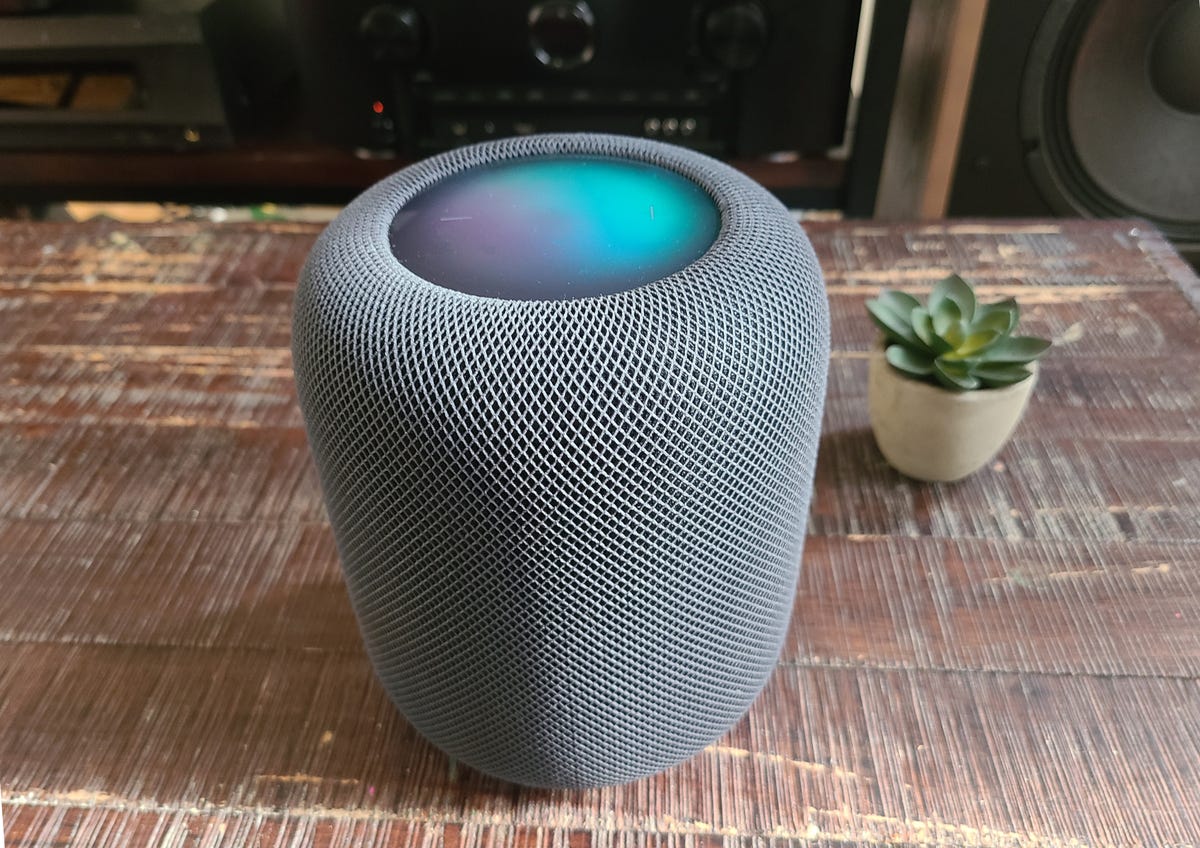The original Apple HomePod came out in 2018, right at the tail end of the smart speaker boom, and it was soon followed by HomePod Mini. After a self-imposed lull, during which the original was discontinued, Apple has come seemingly out of nowhere with the new second-generation full-size HomePod, aka the HomePod 2.
After putting this speaker through its paces I was impressed by its sound quality. From the outside, the second-gen Apple HomePod looks nearly identical to the original, but in true Apple tradition the real changes are on the inside. The company’s focus on spatial audio means the tech is front and center on the new version, with a bigger sound than the speaker’s dimensions indicate. The result is better sound than the original and more refinement than the competing Amazon Echo Studio.
There are plenty of smart speakers out there to choose from, and at $300 the HomePod 2 is still on the expensive end of the scale. If you’re invested in the Apple ecosystem the new HomePod adds a couple of welcome twists on a familiar formula. If you are an Android user, on the other hand, then the HomePod is not for you (you need an iOS device to set it up). The Echo Studio or Sonos One are better options for non-Apple people and both cost less than the HomePod. And if you want most of the features available in the HomePod at a reduced price, the Apple HomePod Mini is an exceptional value. It is the better of the two Apple speakers for the money.
HomePod 2: Sleek design, Apple-centric features
When Amazon released its first Echo back in 2014 it created a brand new category — the smart speaker. Since then brands like Google, Sonos, Apple, Samsung, LG and more have tried their hands at creating a smart speaker, all with varying degrees of success.
One advantage the HomePod has over rivals is design. Whether in white or black, the big HomePod looks lovely, and this is something I can’t say for the Echo Studio, for example. The Echo Studio’s gaudy light ring and Fisher-Price buttons make it look cheaper than it really is.

The $299 HomePod Gen 2 in black or white
Candice Greene/CNET
The HomePod is driven by Apple’s popular voice assistant Siri, and to set it up you’ll need to use an iOS device like an iPhone or iPad (sorry Android users!). The speaker is compatible with the Apple AirPlay 2 standard, which means it can stream music and podcasts from your phone as well as work in a multi-room speaker system.
While you no longer need to use Apple Music as your default service, the alternatives are a bit of a motley crew — iHeartRadio, TuneIn Radio, Deezer and Pandora. Only the last two allow you to hear the song you want, and then only if you pay a monthly subscription fee.
Meanwhile, Spotify, the best music streaming service, can’t be set as the default, and the HomePod won’t support Spotify Connect . To use Spotify with a HomePod you need to tap the “AirPlay and Bluetooth” button in the Spotify app to play music on the speaker. In other words, most HomePod people are better off paying for Apple Music instead.

The HomePod now has always-visible volume buttons
Candice Greene/CNET
You can pair two HomePods to play in stereo, although they do need to be of the same type and generation. You can’t pair a new HomePod with a HomePod Mini or an older HomePod to play in stereo, for example. The speaker can also sync with an Apple TV streamer to play back your TV audio.
The HomePod also supports Apple’s Find My feature so you can ask Siri to play a sound on a misplaced device, or ask for the location of friends or family who share it via the Find My app.
All of these things the HomePod 2 has in common with both the original HomePod and the $99 HomePod Mini. So what’s really changed?
Upgraded speakers, spatial audio and new sensors
At first glance it’s difficult to tell that the HomePod 2 isn’t the same product Apple released five years ago. It still looks like a packaged Asian pear, and it’s basically the same size as its predecessor at 6.6 inches tall and 5.6 inches in diameter. If you’re looking closely you may notice a detachable power cord rather than a captive one, and a smaller display that is also now edge-to-edge when you’re interacting with Siri.
But the new HomePod has a few key upgrades, including a redesigned speaker array with five tweeters instead of seven. These tweeters point upward from the bottom of the chassis and use beamforming to facilitate the other big improvement: Spatial audio.

Inside the new Apple HomePod is the high-excursion woofer internal bass-EQ mic and beamforming five-tweeter array.
Apple
Spatial audio is Apple’s term for 360-degree audio, and it’s used on most new Apple products from MacBooks to AirPods to Apple TV. In terms of the HomePod it mostly refers to Dolby Atmos and it is included in most streaming services as well as the Dolby Atmos music available on Apple Music. Atmos is a surround-sound standard used both in movie theaters and the home, and more recently has been used to remix albums.
The other interesting feature to debut on the HomePod is one that’s also been hiding on the mini all this time — temperature and humidity sensors. You can now use the Home app or ask Siri for the indoor temperature, as well as outdoors. This information will also help other smart devices in your home, especially thermostats.

The new HomePod now features an edge-to-edge Siri display
Ty Pendlebury/CNET
In addition to supporting Apple’s HomeKit, the full-size HomePod also supports the new Matter standard, an open-source protocol that works with numerous smart-home devices. In addition, a feature called Smart Recognition, coming via a software update this spring, “can listen for smoke and carbon monoxide alarms, and send a notification directly to the user’s iPhone if a sound is identified,” according to Apple.
You can move an iPhone close to the speaker to hand off whatever is producing audio, from a song to a podcast to a voice call, to the speaker. (This feature requires iOS 16.3.) The phone will also surface personalized song and podcast suggestions when held near the speaker.
How does Apple HomePod 2 sound?
Though the original HomePod existed alongside podcasts, it was originally billed as a music speaker. From my testing it seems the new HomePod has been designed with a lot more use cases in mind — including movie watching and podcasts. I tested the speaker with a mix of Apple Music tracks (which were Dolby Atmos where available) as well as Spotify and lossless FLAC files played from a MacBook.
The first thing I asked Siri to do was “play some music.” The tune it chose was Planet Earth by Duran Duran and I wasn’t even mad. I compared the sound of this new wave classic on the new HomePod and against the rival Amazon Echo Studio. While the Echo Studio threw accentuated upper mids of the song around the room, it left the sound a little thin. The HomePod’s more laid-back sound and insistent backbeat made the Birmingham lads more enjoyable to my ear.

Detachable pow-er!
Candice Greene/CNET
I followed with Runner by Alex G, which resulted in a big sound out of Echo, and while it was “stereo-like” the instruments weren’t firmly placed in space. The HomePod had a bubble of sound — bigger than the proportions of the cabinet but not really stereo either. The Apple speaker was able to better articulate Giannascoli’s voice, however, while on the Echo he was sitting a little further back and the vocals sounded a little more smeared.
Next came one of my most venerable test tracks, Nick Cave’s Red Right Hand, with its combination of baritone vocals, slippery bass and jarring percussion. At first the bass guitar sounded a little distorted, but enabling the Reduce Bass option fixed the issue. On this song, however, I liked the Echo Studio better. The audio took on a room-size scale in a way the HomePod couldn’t.
Next, I compared the new HomePod to the original HomePod across different genres. The HomePod 2 sounded better than the original with a more intimate vocal response. The heftier bass of the second-generation HomePod also gave Red Right Hand a more propulsive sound. Although the HomePod 2 was also a little louder than the original, you wouldn’t be able to power a party with either one. The Echo Studio has both beat for pure power.
I also listened to some movie soundtracks, including the Dolby Atmos mix of Mad Max which rendered the dialogue clearly. The pronounced Atmos height effects at the start of the film were there with a single speaker, but adding a second in stereo made the effects so much more pronounced. The bass of the explosions was strong and not overblown. While a home theater system wouldn’t be complete without a dedicated subwoofer, in my opinion, the sound was still enjoyable enough for movies.
Finally, I compared the new HomePod to the HomePod Mini and was surprised how well the company’s cheapest speaker fared. With Spoon’s U Got Yr Cherry Bomb, the Mini offered forward vocals, plenty of bass and not too much tambourine. While it doesn’t do spatial effects, the Mini sounded very good at a third of the price. It’s perfectly fine for those who just want a speaker for the voice assistant and some background music.
Overall the HomePod sounds great, but its high price and Apple-centric features simply exclude too many potential users — including Spotify subscribers and Android owners — for broad appeal. And for Apple fans who want a Siri speaker, the Mini is probably big enough.




